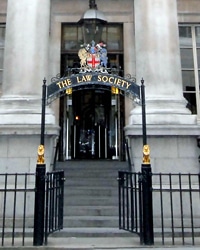
Law Society: single main board
The first sign of action to implement governance reform has emerged from the Law Society, which is recruiting a non-executive chair for its new main board.
The reforms process has largely been carried out behind closed doors for over a year, but some details have crept out in the job description for the new role, which will pay £42,800 a year for around two days a week
It is for three years with the possibility of re-appointment for one additional term. The salary level is pegged to that of a district judge.
The post is open only to admitted solicitors, whether or not still on the roll or holding a practising certificate. Current members of the council can apply. Applications close on 15 October.
It was the society’s failure to embrace governance reform that led to the shock resignation of chief executive Catherine Dixon in January, and an interim chief executive, Paul Tennant, remains in post.
The main board will replace Chancery Lane’s current board structure in early 2018. It will act “as the oversight body for the effective implementation of the society’s strategy and annual business plan, as set by council”. The chair will also support the president.
The job description explains that the Law Society “wishes to be and be seen to be operating a structure that is less complicated than hitherto, enabling the society to make and communicate decisions more quickly, setting the pace in the leadership and promotion of the profession”.
What are presently the primary four boards of equal standing – the management board, the membership board, the legal affairs and policy board, and the regulatory affairs board – will be replaced by the main board, which will report directly to the governing council.
The main board will in turn delegate certain tasks to two supporting committees: the policy and regulation committee, and the membership and operations committee.
“These changes will create an environment that provides council with the confidence to delegate the running of the business to the main board, avoiding the need for council to be occupied in administrative and management minutiae,” the job description said.
The main board will have 11 voting members: the chair, the three office-holders, five council members (two of whom will be the chairs of the supporting committees) and two non-council solicitor members.
There will also be non-voting members: “up to” two lay members, the chief executive and the executive director of delivery and performance.














Leave a Comment